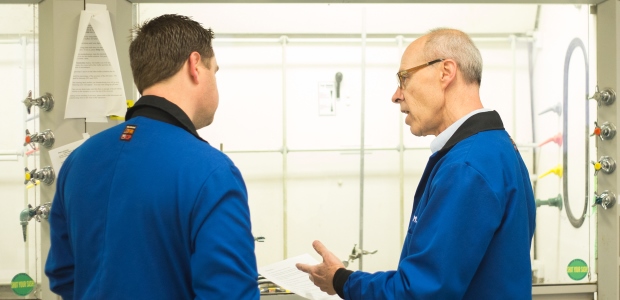
The Science of Laboratory Safety
A recent surge in FR lab coat usage has led to an increase in FR options for lab workers.
- By Mark Saner
- Mar 01, 2016
Laboratories are home to a wide variety of flammable and combustible liquids—making fire, chemical, and thermal burns relatively common accidents in this environment. For instance, in 2008, a research assistant tragically lost her life as a result of the injuries she sustained during a lab accident in which a chemical she was working with ignited. During the incident, she was not wearing protective clothing.
In 2010, a graduate researcher at Texas Tech University suffered from the loss of three fingers, severe injuries to his eye, and burns on multiple parts of his body after a compound he was working with detonated. He, also, was not wearing protective equipment. These injuries are a select few among many similar lab accidents, many of which could be prevented, or injuries minimized, through the use of the proper safety equipment.
Conventional lab coats have been around for decades, but in the past they were typically made of cotton or polyester/cotton blends, both of which are flammable and will ignite when exposed to flames. While flame-resistant (FR) lab coats are also available, due to a lack of standardization in policies and safety standards related to personal protective equipment in lab settings they have not been widely used.
However, with recent injuries and the subsequent increase in awareness about the importance of lab safety, there has also been a recent surge in FR lab coat usage. This has led to an increase in FR options for lab workers. These FR lab coat innovations have been made possible by fabric suppliers and safety apparel manufacturers that have been hard at work developing new products to better protect lab workers against short-duration thermal hazards with more comfortable, durable FR garments.
In 2014, our company released its first line of FR lab coats. They were cut from an inherently FR fiber that’s particularly well suited to the lab environment due to its ability to resist degradation from chemical contact. These lab coats offer advanced protection from short-term thermal hazards as well as a lightweight, breathable feel and ease of movement for lab workers. Unlike non-FR lab coats, lab coats made from FR fabrics do not ignite and continue to burn when exposed to flames, effectively reducing the amount and severity of burn injuries if such hazards occur.
Additionally, a number of safety garment providers also have been developing chemical-resistant aprons and vests, which are built to provide protection during liquid chemical splashes. Chemical-splash protection garments work by preventing the penetration and wicking of liquid chemicals, which in turn minimizes the potential for injuries from chemical burns.
The Benefits of Multi-Hazard Protection
In the past, lab workers in need of protection from both thermal hazards and inadvertent chemical splashes would wear two sets of protection—a chemical-resistant apron/vest over an FR lab coat. While this combination provides protection against a multitude of hazards, it can make for an uncomfortable, stiff outfit, making it hard to ensure compliance in the lab.
So while advancements in protective apparel for labs have been on the rise, the issues of comfort and ease of movement have continued to prevent lab workers from fully complying with lab coat usage. With these issues in mind, we recently developed a new multi-hazard lab coat that combines the inherently FR fiber with a proprietary, new chemical-splash protective finish that works to shed small amounts of liquid chemicals during inadvertent splashes. At only 4.5 ounces, this new lab coat offers superior protection in a lighter-weight package, helping to ensure compliance with each use.
When it comes to safety in the laboratory, a culture of awareness as well as the proper work practices and procedures are essential components in preventing accidents, but they can only go so far to protect lab workers from hazards. When accidents happen, quality PPE, such as a combination FR/CP lab coat, serves as a last line of defense against hazards.
This article originally appeared in the March 2016 issue of Occupational Health & Safety.
About the Author
Mark Saner is the technical manager for Workrite Uniform Company, a position he has held since he joined the company in 2006. He brings 40 years of experience in the fire and safety industries to his work, including 29 years in technical support, safety standards, and product development for Akron Brass Manufacturing Company. He participates as a voting member within a number of national and international safety organizations to help develop, revise, influence, and further improve standards for worker safety. For questions related to safety requirements, product performance, and industry standards, contact him at 1-800-521-1888 or visit www.workrite.com.